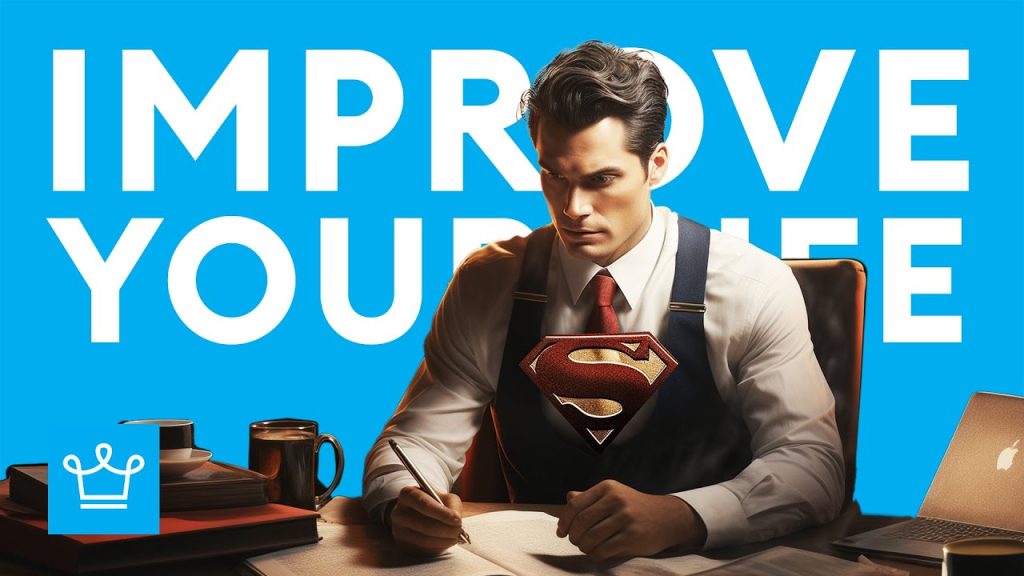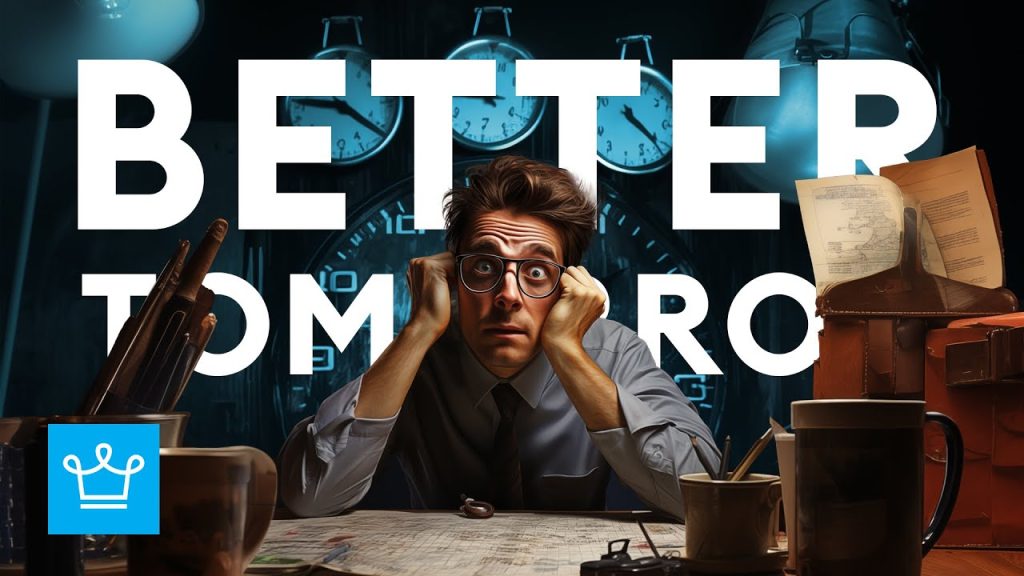Many Would Agree That Luxury Fashion Has Lost Its Charm. Read on to Find Out 10 Reasons Why.
Move over Yves Saint Laurent, Louis Vuitton and Hermes. Make way for Zara and Off-White. And even for Kim, Kanye, Rihanna and Pharrell. Yep, it’s official — luxury fashion is becoming irrelevant.
Luxury fashion used to have a glow around it, that nobody else could even get close to. But those days are over. Let’s dive in and find out why.
Welcome to Alux.com – the place where future billionaires come to get inspired. If you’re not subscribed yet, you’re missing out.
Reading a long boring article is so irrelevant in present times. Switch over to the video version of this article:
With that done, let’s move on to the article.
1
Luxury Fashion Houses Aren’t Alone in Influencing Fashion Anymore
For a long time, everything in fashion came from the big-name designers at the top of the tree — the Dolces, the Gabbanas and the Lagerfelds. It was simple. Trends started on the catwalk, then moved onto the catalogues, and ended up in the shop windows of every single retailer, whether they were luxury, knock-off, or budget.
If you’ve seen the Devil Wears Prada, maybe you remember a scene where Meryl Streep — the uber-fashionable and kinda scary editor of a fashion magazine — schools Anne Hathaway — the not-even-remotely-trendy and totally out-of-place intern — on how even the color of her painfully unfashionable sweater started out as a thing on the catwalk.
That was then. But things have really changed. Now trends start in all kinds of places. Street fashion, fast fashion, and whatever’s trending on Instagram all create ripples that move upwards, downwards and sideways in the fashion world. And it means that high fashion has long lost its place as sole judges of what looks good.
2
Fashion Now Moves Faster Now Than Old-School Fashion Houses
The main reason this happened, is that everything moves so much faster than it did before. Business, communication and technology all move faster. And yep, you guessed it, so do fashion and trends.
Traditionally, most luxury brands only had two collections a year — you gotta admit, not exactly fast moving. Once the internet took off, the stage was wide open for new players to come along. Players who could react way faster to demands for a new look — and have it in shop windows before you could say “Prada”.
The brand that really pioneered this was Zara. They changed the pace up to twenty collections a year, with a cycle of just five weeks between a designer having the idea, and the product coming out on the shelves. And once the change happened, it meant people were hungry for new styles to come along quicker. And suddenly, high fashion had a serious competitor. Appropriately, it ended up being called fast fashion.
And just a quick reminder. Whether we’re talking about luxury, the business world, how to be more successful with your career or with your money decisions, here at Alux, we’ve got them all covered . So if you’re not already subscribed, be sure to do so for more quality content every day.
3
Social Media and Influencers Put It up Another Gear
So, the internet becoming a big thing — that was already a couple of decades ago. But things get way faster once you factor social media into the equation too. Influencers are constantly looking for that new dress, bag or swimsuit to rock on their Instagram pages, and they want what’s trending now. Definitely not something that just comes out in two, three or four collections a year. And the whole pace goes up a gear.
Besides, just in case you hadn’t noticed, these days Instagram gets the attention of a lot more people than any fashion shows in Milan, Paris or New York. And while the luxury brands were busy focusing on the fashion shows and old-school marketing campaigns — younger brands got to work on storytelling on social media.
Brands like Off-White, I.AM.GIA and Reformation, that have millions of followers on Instagram. Creating a message that resonated with a younger audience — and disrupting the market.
4
Fast Fashion Beat Luxury Brands on Price
Another huge reason why fast fashion looks like such a great option compared to luxury fashion. Duh — it’s cheaper! You get to look cool at a fraction of the price. It’s the whole idea that drives fast fashion. If influencers are wearing it, that means it’s highly desirable. So who needs to shell out a four-figure sum when twenty dollars will do?
Besides, if something’s going to go out of fashion in a few months, or weeks, you’re not going to make it to last — you’re going to want to make it cheap. Just as long as it’s good enough to turn heads and in shape for ten washes. Better still, on Instagram you can’t tell how high quality the fabric is.
Of course, there’s a catch. If you’re buying stuff over and over again, and they only last a season, that’s going to add up in costs. Not to mention environmental damage. That’s right, fashion is now one of the world’s biggest polluters. And fast fashion’s double-edged — it does fill up your wardrobe for cheap, but in a year it will be filling up landfills.
There are signs consumers are starting to wise up to this — but still, being cheap is what made fast fashion take off the way it did, and took some of the shine off luxury fashion.
5
Celebrity Brands Have Got in on the Action Too
These days, it’s pretty hard to name a celebrity who doesn’t have their own fashion line. Brands like Rihanna’s Fenty, or Pharrell’s Billionaire Boys’ Club. Kim and Kanye are doing it too. So are Beyonce and Jay Z, and everyone from Drake to Gwyneth, and even Venus and Serena. We could go on for longer — but we think you get the point. And they get a huge amount of marketing, and create a lot of buzz by having celebs behind them.
Talking about design, celeb brands can range from streetwear to fast fashion to something pretty close to luxury. And when it comes to quality, it tends to be good — but not up there with the true luxury brands. But when it comes to business, who cares? They’re perceived as equally desirable. And it’s another reason why the luxury brands are losing their halo — or at least having to share it with celebrity lines.
6
High Fashion Has Got Into Bed With Fast Fashion…
No wonder — high fashion’s been undercut on prices, out-marketed and beaten in the race to come out with new designs faster. How do luxury brands get around this problem? Easy — do crossovers with fast fashion.
That’s exactly what they’ve been doing for almost a couple of decades — since Karl Lagerfeld’s collaboration with H&M in 2004. Plenty of others have done it since. Louis Vuitton with streetwear brand Supreme, Manolo Blahnik with Vetements – or even Prada and Adidas getting together to make sneakers.
It’s not what you used to expect from high fashion brands. And for sure, there was a time when they wouldn’t have dreamed of it. But now, it’s a way for luxury brands to stay relevant. And you’ve got to admit, it’s working.
But it’s also got a big minus side to it. People are finding it harder to distinguish between high fashion and low fashion anymore. Some people have called it brand contamination. And luxury brands lose their aura — the greatest marketing tool they’ve had until now.
7
Tastes Are Being Formed Earlier and Earlier
Luxury consumers are getting younger and younger, and brands are trying harder to get their attention more than ever before. Of course, Instagram does the job better than fashion shows. And Kim and Kanye or Rihanna and Pharrell mean more to them than Valentino or Prada.
We mentioned brands like Off-White, I.AM.GIA and Reformation — they’ve been disrupting the luxury segment with their millions of followers on Instagram. And even though they can’t boast craftsmanship on the same level as heritage brands, the fact that they’re huge on Instagram makes them equally desirable to younger audiences — who grow up on Instagram. And in a lot of cases, those tastes will last.
8
Millennials and Gen-Zers Care Less About Heritage Brands Than Older Generations Did
It’s official – according to a recent survey, millennial and Gen-Z fashion consumers ranked heritage and brand history sixth — behind things like the brand message that’s communicated through marketing, as well as design and customer service.
And millennials and Gen-Zers are a huge part of the market. Once brand messages become more important than heritage and craftsmanship — the luxury brands have got a problem on their hands. Especially when they’re not social media savvy, and not great at creating those brand messages.
It’s true that some high fashion brands have managed to stay relevant — like Louis Vuitton and — we mentioned before — Burberry. But a lot haven’t.
If you are an old soul interested in reading more about old fashion houses, check out Top 10 Oldest Fashion Houses.
9
Not Everybody’s Convinced Luxury Brands Are Worth the Price Tag
When cheaper brands are equally as appealing — and people don’t care about craftsmanship as much — it gets harder for luxury brands to justify the price tag.
And young consumers have got wise to the fact that just because something’s expensive, doesn’t always mean it’s worth all of that price. Sure, a lot goes into things like materials, design and construction, that are way better than anything you’ll find in fast fashion. But still a good part of that price tag goes towards things that you don’t get to keep in your wardrobe — like expensive retail locations, big marketing budgets — and, for want of a better word, prestige.
A couple of decades ago, customers who could afford luxury brands still thought it was worth paying for these things. Now, a lot of younger people aren’t’ so sure.
10
COVID’s Just Made Things Even Harder for Luxury Brands
Besides being bad for sales — who needs a Chanel bag or a Hugo Boss suit in lockdown? — the other problem is fashion shows. Fashion shows in Paris, Milan, London and New York were where fashion used to go on display, and it was the platform where luxury brands used to really create waves.
Now it’s not just that luxury fashion’s been threatened by fast fashion for over a decade — their main platform got taken away when fashion shows were cancelled. Compare that with the main platforms fast fashion and street fashion use — the internet marketing campaigns and social media — Covid sure hasn’t stopped those.
Sure, the fashion shows will come back. When they do how relevant will they be? We’ll just have to wait and see.
Question:
Do you think old-school luxury fashion is overrated — or is it still worth the hype?






